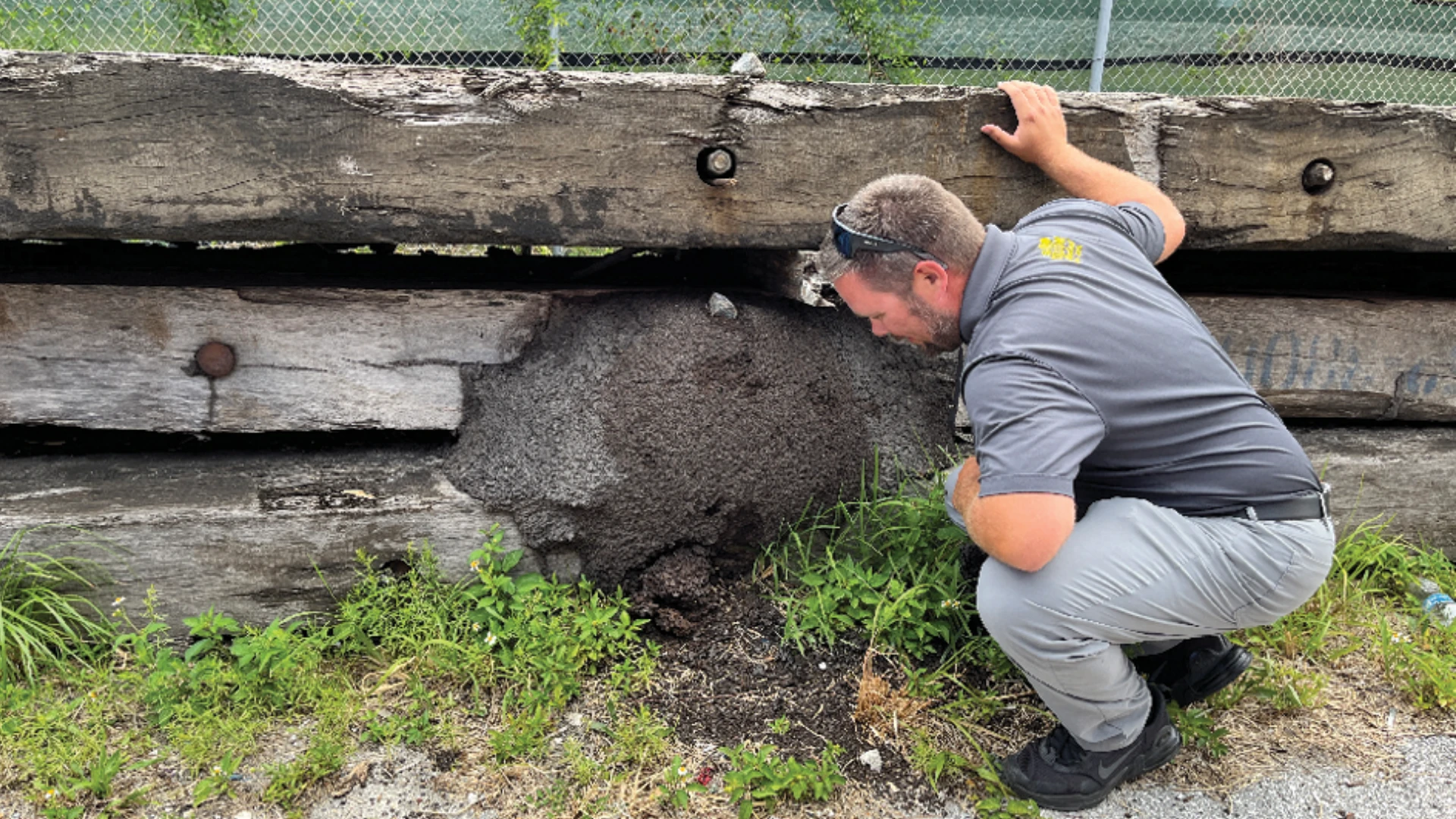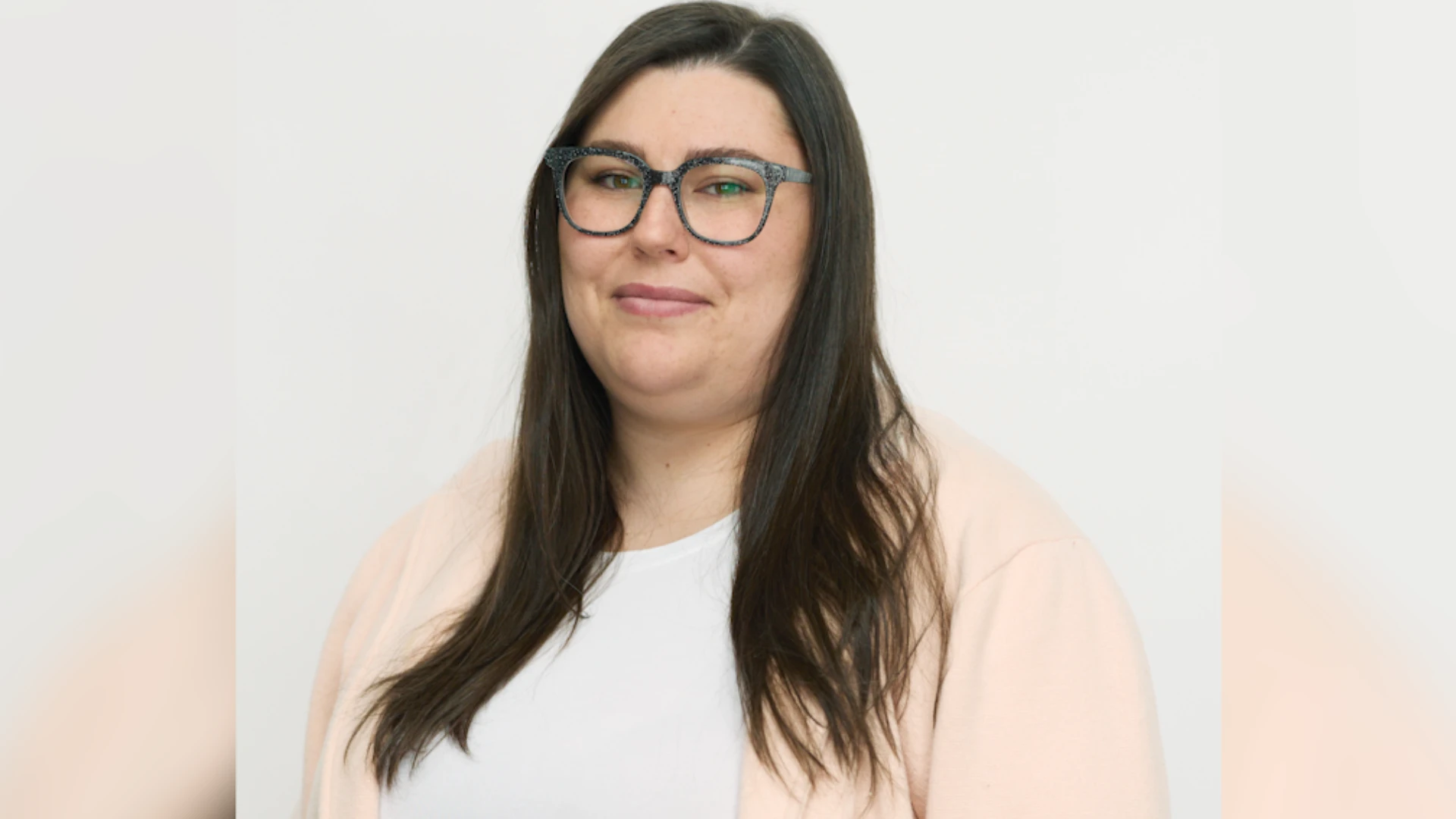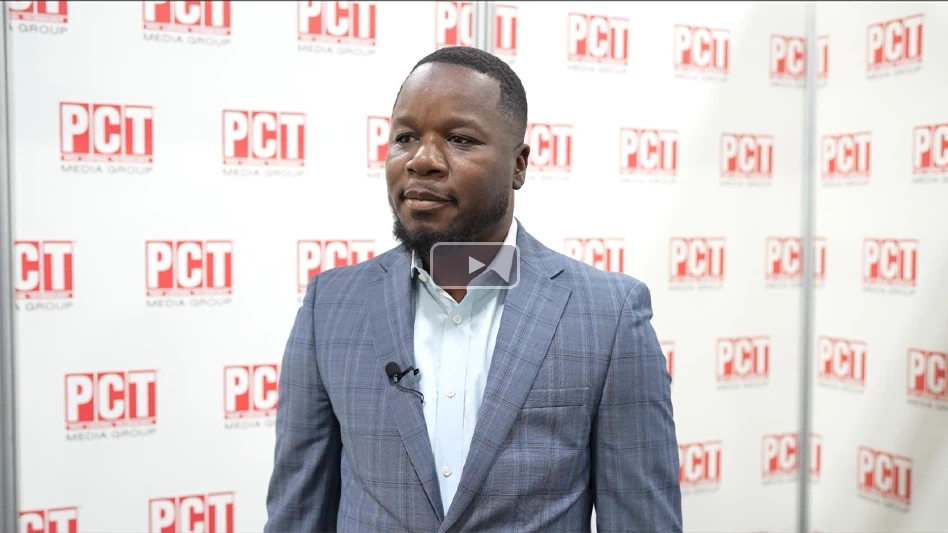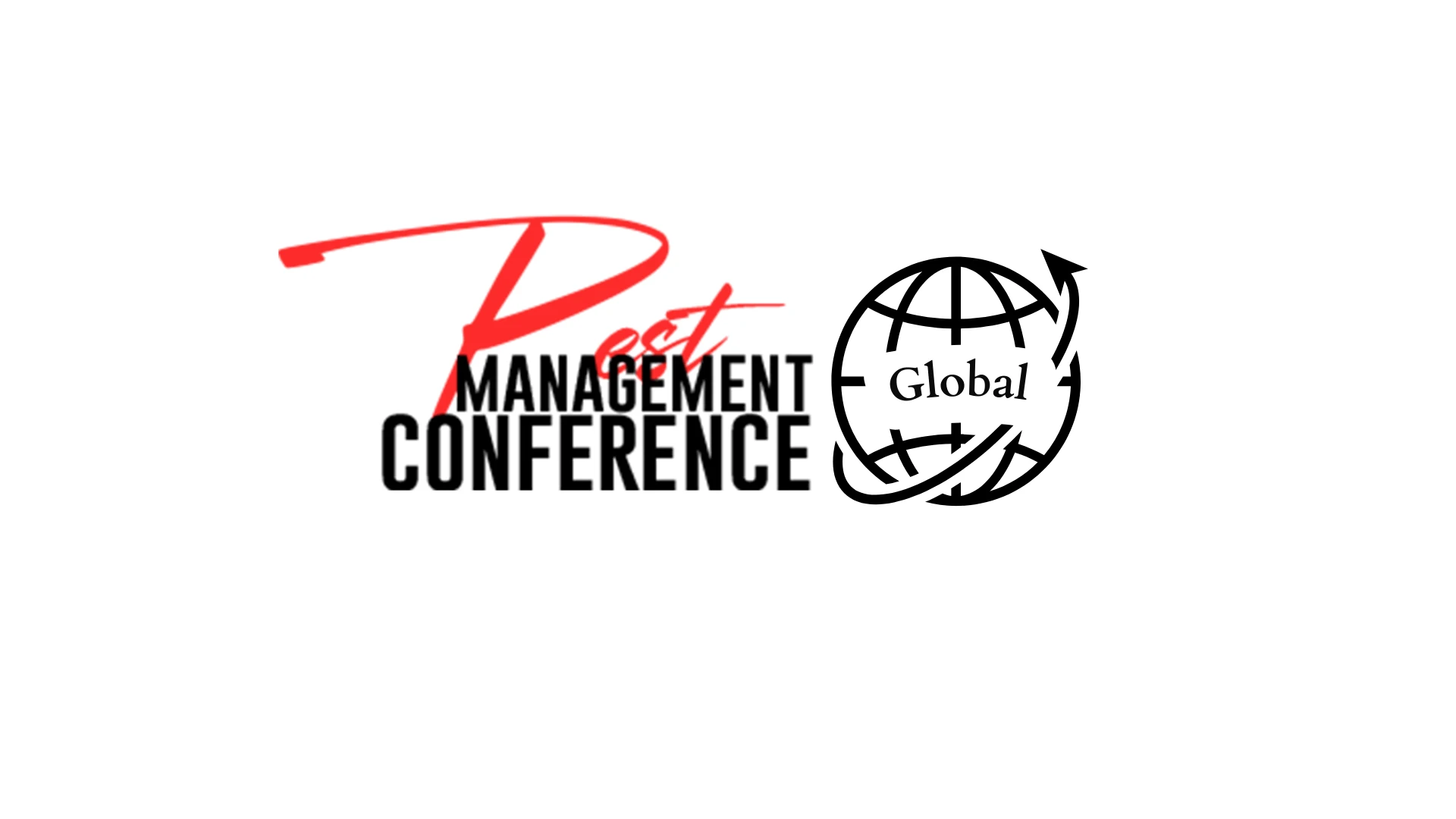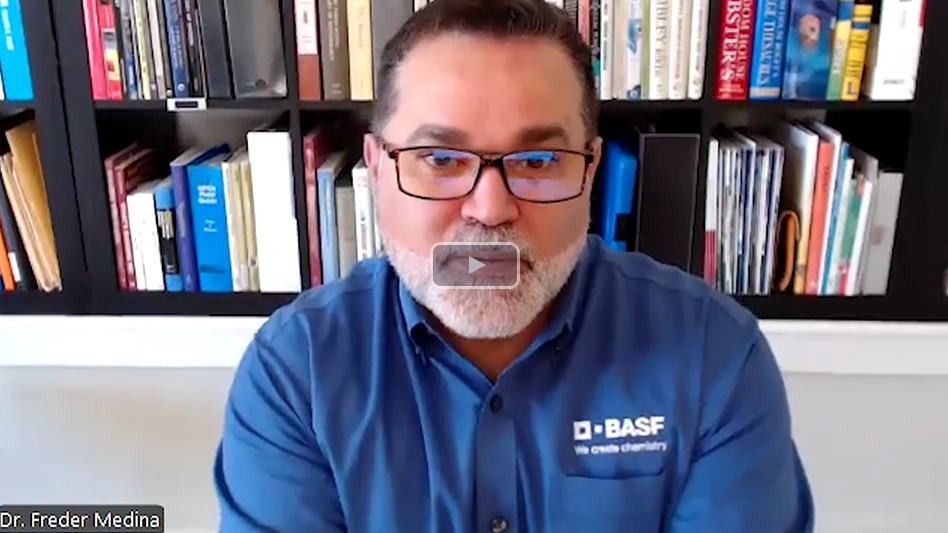Although identification is important, it is the cockroach inspection and trapping program that shows your customers that they have retained a professional.
Cockroaches are public health pests. In the laboratory they can be found to transmit all kinds of disease. Cockroaches trapped in the "wild" also have been found to carry a number of pathogens on their bodies. It’s a pretty safe bet that if something crawls through a sewer and then onto human food that the food will become contaminated with bacteria. A cockroach crawling through putrefying food behind equipment in a kitchen will probably carry some pathogens to the plates and water glass rims it visits.
The involvement of cockroaches in childhood asthma in low-income housing is well documented and is becoming nearly common knowledge. Since this asthma is the result of continuous exposure of allergic individuals, it means that the ailment is not limited to inner cities; it’s just concentrated there. Colleges and universities are notorious for their cockroach infestations in lab classrooms (just ask any biology or medical student), meaning there are long exposures to potentially vulnerable students. Yes, right up there with filth flies and commensal rodents, cockroaches pose serious health risks. The trick is to eliminate the cockroaches and their cast skins and droppings, all of which are involved in the processes described above, without making the problem worse by heavy-handed use of strong and persistent pesticides or careless techniques.
IDENTIFICATION IS KEY. At one time, a PCO might encounter three or four cockroach species in the course of work, but now, with a global economy, we have global incursion of species. In cosmopolitan cities like New York, Los Angeles, Phoenix or Dallas, a service technician may encounter Australian, Turkistan, Surinam, Asian or Cuban cockroaches, each with a different biology and behavior than the half dozen or so species that are so well understood by the industry. It’s not enough to be knowledgeable about the common species (like American or German cockroaches); even the uncommon species must be known.
The identification keys in the Handbook of Pest Control by Arnold Mallis or Truman’s Scientific Guide that proved so useful only a few years ago are not as complete by today’s standards. Unfortunately, there are no keys currently available for non-entomologists that include all of the species a PCO may encounter. As they say, "What you don’t know is what you don’t know." Talk to other PCOs in your state and national organizations to find out what species are being encountered in your area.
I recently received a call from a former coworker, Doug Gardner, now with Ecolab, who reported an encounter with what appeared to be German cockroaches fluttering about a homeowners’ lights, like moths, in Phoenix. They were Asian cockroaches (no one knows how they got into Arizona).
After identifying a new regional species (or even an isolated infestation), a trip on the Internet is probably the fastest way to get information on the pest. There is a lot of wrong information out there (even on a few pest control company websites, unfortunately), so check the source. Try to stick to university- or government-sponsored websites, being sure not to discount foreign sites, from the country of the pest’s origin.
INSPECTION AND MONITORING. All IPM programs begin with information gathering. Although identification is important, it is the inspection and trapping program that shows your customers that they have retained a professional. Knowing the species of cockroach and its habits will indicate to the PCO whether they have an outdoor species or an indoor pest.
A thorough inspection will determine primary nesting sites, sanitation problems, opportunities for exclusion, resource sites, source of infestation and the potential for pest population growth. Perform indoor inspections in the dark, then turn on the lights and reinspect. Perform outdoor inspections in the daytime, followed with a night visit. Install an amber filter over your flashlight lens to keep from scattering cockroaches found. Enter rooms slowly to avoid creating air currents that "pre-alert" the insects.
Outdoor trapping can be accomplished with a mayonnaise jar slipped into a sock with the open end of the sock being on the same end as the opening on the jar (see pg. 34). The sock makes it easy for roaches to climb up and into the jar. Coat the inside lip of the jar with VaselineTM to prevent some species from escaping and set the jar upright in hidden outdoor areas, with a chunk of the cockroaches’ favored food (as determined by research) on the inside. If the roaches’ favorite food is not known, banana works well for most outdoor species. Create maps indicating the locations of all traps and record all data collected.
INITIAL ELIMINATION. Some things to consider:
• The initial fee charged to a new account is not a new account penalty. This fee is typically larger than the regularly scheduled service visits (equivalent to as much as one to several months’ rate) to pay for the additional work and follow-up visits to be performed.
• Dead cockroaches do not develop resistance. Rotation of products and concerns of pesticide resistance are non-issues if all insects are eliminated during the initial series of service visits.
• It’s easier to maintain a cockroach-free environment than to suppress a population and keep the level of infestation low.
• "Pest management" was the standard of the 1980s. "Pest elimination" was the objective in the 1990s. "Pest prevention" will be the goal in this decade.
• When it comes to pesticides, consider them a method of last resort and remember that less is more.
Physical removal of cockroach populations should be the first priority. A vacuum cleaner is a mandatory piece of equipment for this step and a number of units are currently marketed for this purpose. Select a model that is high powered and HEPA rated to prevent cockroach and "cast skin" fragments from being ejected from the vacuum’s exhaust. These airborne particles could potentially cause health problems. The end of the hose should be fitted with a reducer and a length of flexible vinyl tubing to create a crack and crevice attachment.
An insect growth regulator (IGR) should be used to end reproduction at the site and create a finite population. Liquid IGRs should be mixed with water and applied at least every other month for six months to break the cycle of reproduction. Make these applications close to potential harborage sites. Use fast-acting baits, dusts and non-residual low-toxicity crack and crevice insecticides to address those insects that could not be vacuumed.
Dig out debris, food and other organic material that are providing resources to the pests. This "stuff" can be scooped out and raked into the middle of the floor or actually cleaned up for the client, depending on the arrangements made before the job was started. Install dated sticky monitor traps to assess the effectiveness of the treatments. Write a report with recommendations about sanitation, storage and structural defects. Schedule a follow-up visit for three to five days later. Repeat the procedures on the follow-up visit, with the exception of dust and IGR application. Return for follow-up visits every five days or so until there is no doubt that the pest problem has been eradicated. Generally speaking, if the problem still exists after a half dozen of these visits, something is being missed.
MAINTENANCE SERVICE. Sometimes referred to as regular service, this is the ongoing program that cements the relationship between PCO and client. All areas of the account that are likely to be infested with insects should be inspected monthly. Locations with the potential to support insects should be inspected quarterly. The remainder of the account should be inspected annually.
Determine the man-hours (or woman-hours) needed to accomplish these inspections and divide the time into manageable chunks to determine the service frequency. On each visit, inspect the areas of the account scheduled for that visit, follow up on historically "bad" areas and change insect monitors that are too old (a film of dust can make the trap ineffective, but still allow it to "feel" sticky on your fingers). Any cockroach infestations identified on these service calls should be resolved using the same procedures described earlier.
Start reporting and eliminating harborage sites on each visit. Every crack and crevice that is caulked up or otherwise repaired reduces the likelihood of reinfestation as well as reducing the need for chemical application. How much sealing will be performed on each visit will depend on the goals and an objective agreed on by the client before the contract was started. The days of saying, "Cleaning up and repairing the account is not my job" are over. If it affects the cockroach population it, is the PCO’s job. Work it into the program and price accordingly.
Notice that there is no instruction or provision for routine application of pesticide. The goal is to provide a pest-free environment, not to deliver pesticides to the account. As long as that goal is being met, the program is effective. The analogy I like to use is that a person goes to the dentist for regular check-ups and cleaning for which a fee is paid. That person is happy to pay the fee and thankful that a filling was not needed. If corrective action is warranted, however, the dentist charges an additional fee. We are better than dentists are (so to speak)! If we must perform corrective actions on a regularly scheduled service visit, we do not charge extra. The fee that our clients pay is for expertise, not pesticides.
CONCLUSION. The program outlined here does not pretend to be the only solution to cockroach elimination and prevention. In truth, a comprehensive program contains so many details that it would fill several issues of this magazine and is beyond the scope of this article. My objective is to motivate the reader to revisit his or her cockroach control program and to challenge that individual to raise the bar on professionalism, pesticide reduction and safety to the PCO. That is the beauty of an IPM program. It’s the right thing to do.
The author is a board certified entomologist and vice president of technology and training for University Termite and Pest Control Inc., Tucson, Ariz. He can be reached via e-mail at dseemann@pctonline.com.

Explore the May 2000 Issue
Check out more from this issue and find your next story to read.
Latest from Pest Control Technology
- The Evolving World of Electronic Rodent Monitoring
- Back-to-basics Approach for Cockroach Control
- PPMA Encourages PMPs to Take Part in Termite Awareness Week
- Moneypenny is a Provider of Virtual Receptionists
- Video: Top 10 PCT Photo Contest Finalists
- Massey Services Expands with Southeast Commercial Region
- Pest Management Foundation Announces Kevin J. Burns Scholarship
- How to Identify Clover Mites
